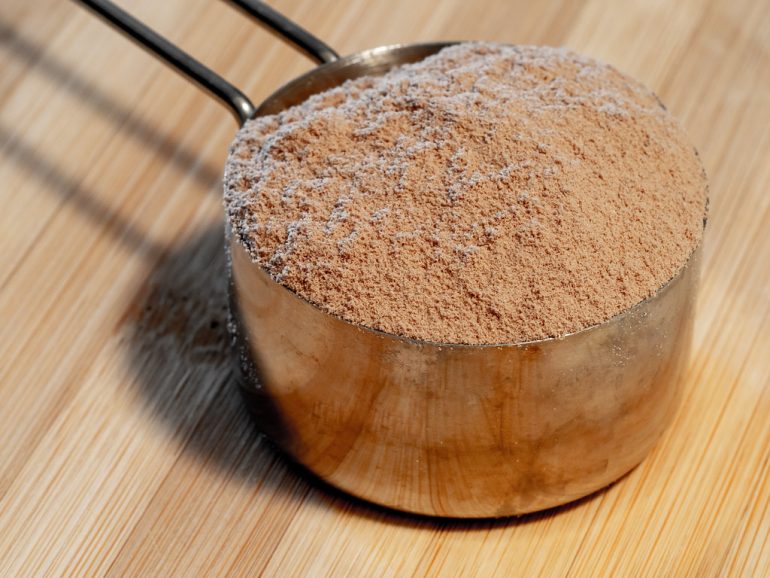Protein powder – it’s a term you’ve probably heard thrown around at the gym or seen in the health section of your local grocery store. But what exactly is it, and why is everyone talking about it? In this beginner’s guide, we’ll break down everything you need to know about protein powder, from its origins to its benefits and different types.
Understanding Protein Powder: The Basics
Protein powder is a dietary supplement that’s typically made from one or more sources of protein, such as whey, casein, soy, pea, or hemp. It’s commonly used by athletes, fitness enthusiasts, and anyone looking to increase their protein intake. Check out the best time released protein powder for one of the options available.
Why Do People Use Protein Powder?
There are several reasons why people incorporate protein powder into their diet:
- Muscle Building and Recovery: Protein is essential for muscle growth and repair, making it a popular choice among those who engage in strength training or intense workouts.
- Convenience: Protein powder offers a convenient way to boost protein intake, especially for individuals with busy lifestyles who may not always have time to prepare protein-rich meals.
- Weight Management: Protein can help increase feelings of fullness and support weight loss or weight maintenance goals by reducing overall calorie intake.
- Nutritional Support: For individuals who may have difficulty meeting their protein needs through whole foods alone, such as vegans or vegetarians, protein powder can be a convenient way to ensure adequate protein intake.
Types of Protein Powder
Protein powders come in various forms, each with its unique characteristics and benefits. Some of the most common types include:
- Whey Protein: Derived from milk, whey protein is quickly absorbed by the body and rich in essential amino acids, making it an excellent choice for post-workout recovery.
- Casein Protein: Also derived from milk, casein protein is digested more slowly than whey, providing a steady release of amino acids over time. This makes it ideal for promoting muscle repair during periods of rest, such as overnight.
- Soy Protein: Made from soybeans, soy protein is a complete protein source that’s suitable for vegans and vegetarians. It contains all nine essential amino acids and has been shown to offer various health benefits, including heart health support.
- Pea Protein: Pea protein is derived from yellow peas and is a popular choice for individuals with dairy or soy allergies. It’s rich in branched-chain amino acids (BCAAs) and easily digestible, making it suitable for pre- or post-workout supplementation.
- Hemp Protein: Hemp protein is made from hemp seeds and is a plant-based source of protein that’s rich in omega-3 fatty acids and fiber. It’s also a good source of essential amino acids, although it may not contain as much protein per serving as other types.
How to Use Protein Powder
Protein powder can be incorporated into your diet in various ways, depending on your preferences and nutritional goals:
- Shakes and Smoothies: One of the most common ways to consume protein powder is by blending it into shakes or smoothies. Simply mix a scoop of protein powder with water, milk, or your favorite liquid base, along with fruits, vegetables, or other flavorings of your choice.
- Baking: Protein powder can also be used as an ingredient in baked goods such as pancakes, muffins, or protein bars. Simply substitute a portion of the flour with protein powder to boost the protein content of your recipes.
- Oatmeal or Yogurt: Stirring protein powder into oatmeal or yogurt is another easy way to increase your protein intake. Simply mix it in until fully incorporated for an extra protein boost.
- Protein Pudding: Mix protein powder with a small amount of liquid (such as almond milk or Greek yogurt) until you achieve a pudding-like consistency. Enjoy it as a tasty and nutritious dessert or snack option.
Potential Side Effects and Considerations
While protein powder can be a convenient and effective way to increase protein intake, it’s essential to use it responsibly and be aware of potential side effects:
- Digestive Issues: Some individuals may experience digestive discomfort, such as bloating, gas, or stomach cramps, when consuming protein powder, especially if they have underlying digestive issues or are sensitive to certain ingredients.
- Allergies or Sensitivities: Protein powders derived from milk, soy, or other common allergens may trigger allergic reactions or intolerances in some individuals. Be sure to read labels carefully and choose a protein powder that’s suitable for your dietary needs.
- Quality and Purity: Not all protein powders are created equal, and some may contain added ingredients, fillers, or contaminants. Look for products that have been third-party tested for quality and purity to ensure you’re getting a safe and effective product.
In Conclusion
Protein powder is a versatile and convenient dietary supplement that can help support muscle building, weight management, and overall health and wellness. With various types available to suit different dietary preferences and goals, incorporating protein powder into your routine can be a simple and effective way to boost your protein intake and support your fitness journey. As with any supplement, it’s essential to use protein powder responsibly and consult with a healthcare professional if you have any concerns or underlying health conditions.





